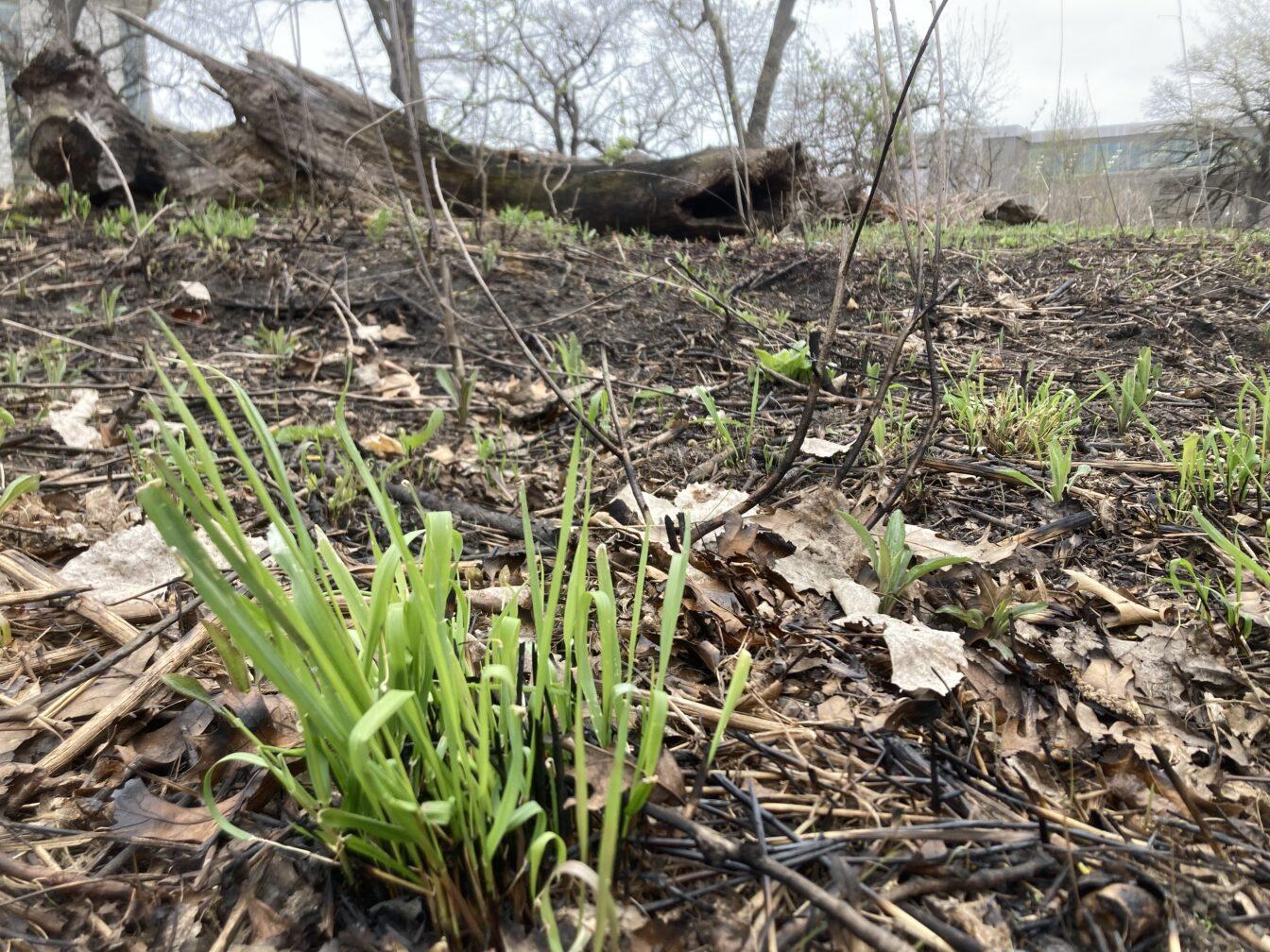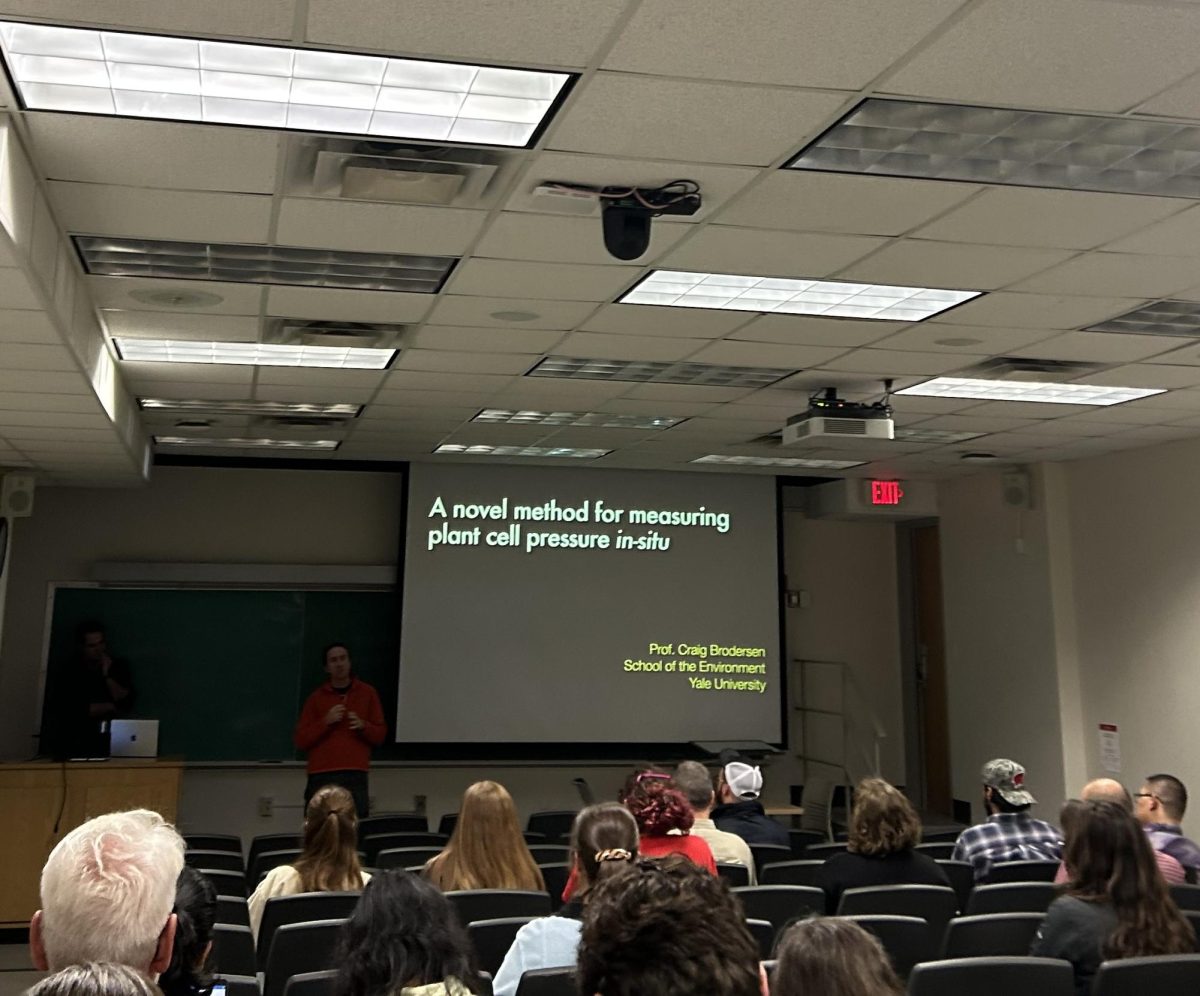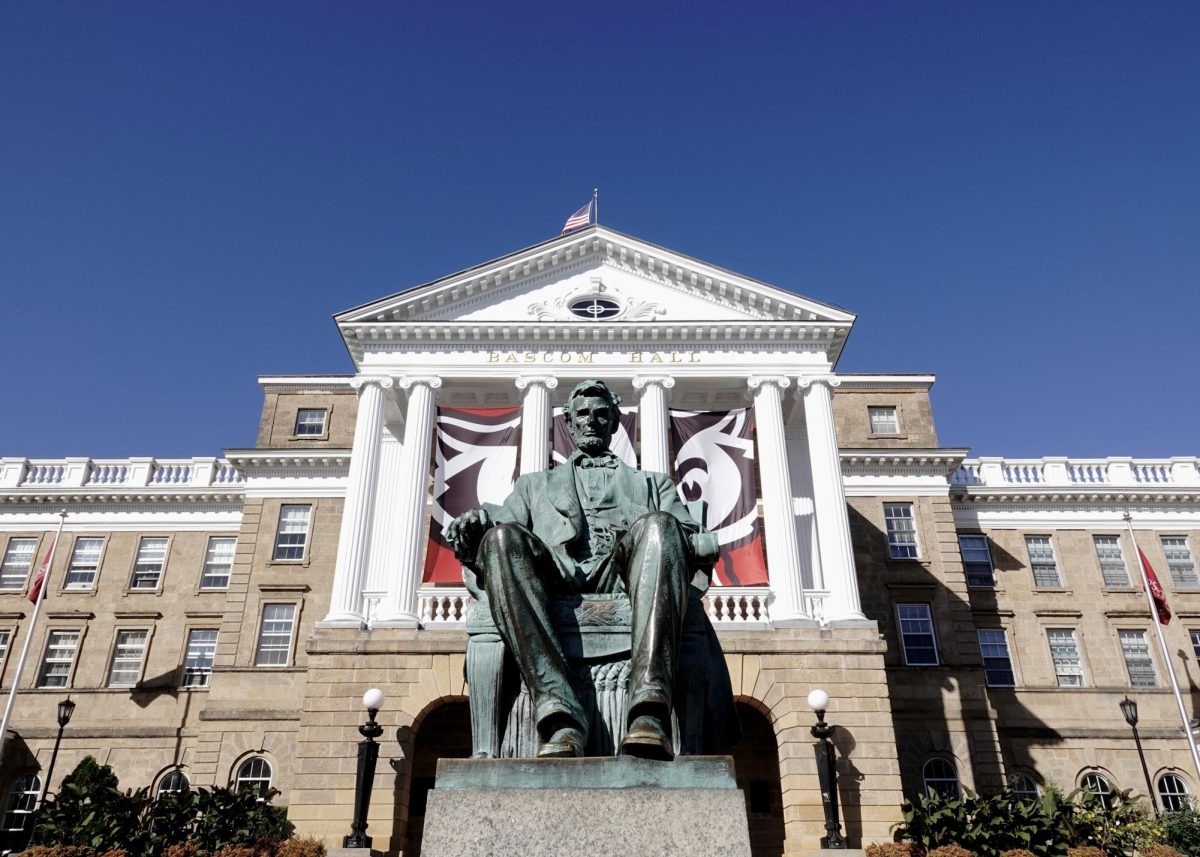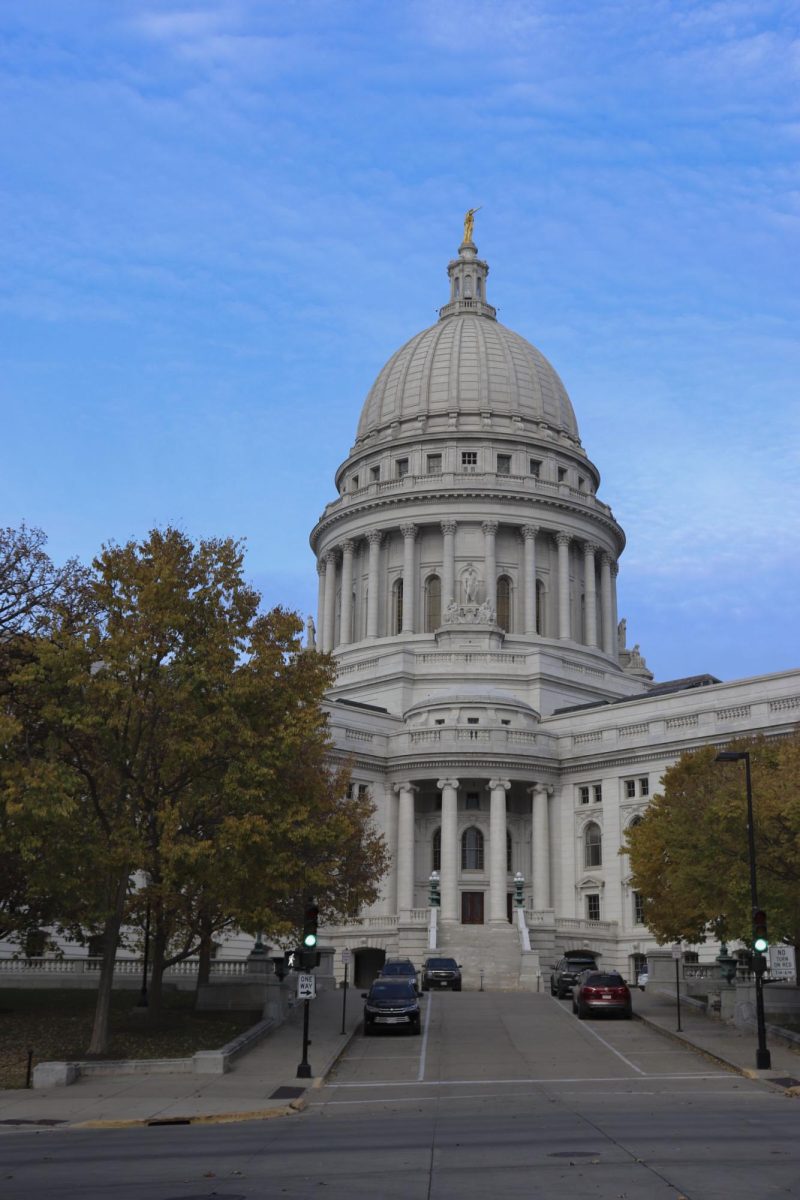April 12 to 14, the Wisconsin Department of Natural Resources and National Weather Service issued a red flag warning, which indicates extreme risk for a wildfire due to different environmental conditions. April 14, the Arcadia Fire — a 2,900-acre wildfire — started in Monroe County, according to the DNR. Officials contained the fire within a day.
DNR Forest Fire Protection Section Chief James Barnier said that due to climate change, the ideal conditions for wildfires are becoming more common in recent years. According to the 2021 Wisconsin Initiative on Climate Change Impacts Report, precipitation during the summer months has decreased, making Wisconsin’s forests more vulnerable to wildfires.
In Wisconsin, most wildfire risk occurs in the early spring months, according to Barnier. About 800 to 1200 wildfires occur every year in Wisconsin — most of which start accidentally, Barnier said. Many of the most damaging fires occur in mid-April to mid-May, when the snow has just melted and vegetation has dried out.
While climate change can cause an increase in wildfires through the state, prescribed fire can offer some solutions. A prescribed fire, also known as a controlled burn, is very different from a wildfire. Trained professionals set prescribed fires only under specific environmental conditions for the purpose of managing land or rehabilitating natural diversity, according to the Wisconsin Prescribed Fire Council.
But, with climate change altering the seasonal norms and causing more unpredictable weather, it’s becoming difficult for land managers to find a time to light prescribed fires. According to the 2021 Wisconsin Initiative on Climate Change Impacts Report, as Wisconsin continues to experience a warmer and wetter climate, it’s becoming increasingly difficult to find a timeframe to safely and effectively set prescribed fires.
Records from early European settlers indicate that originally Southern Wisconsin was largely oak savanna, a more open grassland environment with a partial tree canopy. Each spring, Lakeshore Nature Preserve staff set prescribed fires to help restore and maintain this native diversity that was lost over the years, Projects Coordinator Adam Gundlach said.
Recent study finds how principal investigators influence lab culture
Today, the Lakeshore Nature Preserve works to restore this native habitat and manage areas that have become overgrown with trees and brush. Prescribed fire is an important tool for these projects, Gundlach said. Prior to European colonization, fire was so common that about half of what would become Wisconsin routinely burned due to lightning strikes or as prescribed fires set by Indigenous people to manage their environment.
When Europeans started colonizing the area, they stopped lighting prescribed fires, Gundlach said. In other areas of the country — namely the southeast — Europeans continued the Indigenous prescribed fire practices.
“It was that European mindset,” Gundlach said. “So fire wasn’t a European cultural practice and they definitely manage their forest differently.”
It wasn’t until the 1960s that people saw their native ecosystems suffering and became more interested in land management, Gundlach said.
According to the Wisconsin Prescribed Fire Council, native plants are well adapted to fire. Wildflowers and grasses in fire adapted environments have long root systems that allow them to regrow post-fire and oak trees have bark capable of withstanding fire.
Stalagmites in Wisconsin’s Cave of Mounds hold clues to previous climate changes in state
When these fire adapted environments are healthy, they’re better able to withstand the stresses caused by climate change. Fire adapted ecosystems also store large amounts of carbon in the soil. In fact, these ecosystems hold more carbon than they emit when burning, according to the Wisconsin Prescribed Fire Council.
“The more diverse and resilient things are, the better off they will be trying to deal with all these ranging conditions out there,” Gundlach said.
In other cases, too much fire, especially when combined with a changing climate, can change ecosystems in unexpected ways. Like Wisconsin, the Greater Yellowstone ecosystem is also well adapted to fires, though it differs in severity and timing. Since the glaciers receded 10,000 years ago, larger, high-severity fires have burned in the greater Yellowstone region once every 100 to 300 years, according to Nathan Kiel, a UW Ph.D. candidate in the Department of Integrative Biology.
In 1988, one of these large fires burned through 36% of Yellowstone, according to the National Park Service. Now, 35 years later, 16% of the area burned in that initial fire isn’t regenerating as expected, Kiel said. Where researchers expected to see forest in certain previously burned areas across Yellowstone, there isn’t any.
Kiel said many of these ecosystems hold a lot of carbon, and when they burn, that carbon is released into the atmosphere. But, as forests regenerate, they then incorporate that carbon back into the forest and store it. If the forests aren’t coming back, it’s likely there isn’t as much carbon stored in those areas.
Then, in 2016, another wildfire swept through Yellowstone and burned through forests that were still recovering after the 1988 fire.
“That sort of event, that really short occurrance of fire, hadn’t been observed at that scale before,” Kiel said.
NASA astronomer speaks on James Webb Telescope, successes since launch
Because the forests in Yellowstone had evolved to fires occurring every 100 to 300 years, it’s difficult for them to reestablish post-fire, Kiel said. Certain tree species can regenerate quickly after fires because pine cones only open and disperse seed after they come into contact with fire. When another fire returns so quickly, there hasn’t been time to rebuild that seed source and the forests don’t regenerate as well.
In Yellowstone, the soil became hotter and dryer due to less shade cast by the burned trees after the wildfires. This change meant that for any plants to grow, they would need to adapt to grow in these higher temperature soils. While most of the biodiversity remained in the plants that grow under the tree canopy, there are more plants that tend to thrive in sunny conditions than previously, Kiel said.
“Historically, [forests] would have had a few hundred years to come back, but we’re interested in this because with fire frequency increasing, we expect to see more areas that look like that,” Kiel said.














